As Australia opens up again and the holiday season approaches, most of us are looking forward to, what will almost certainly be, a busy time of year. You will hopefully have a robust workforce forecasting and scheduling solution in your arsenal to help manage changes and the rush.
A workforce forecasting and scheduling solution ensures that your company has the right amount of staff at the right time by predicting staffing needs based on past trends. It can also identify any gaps in workforce coverage and availability and find ways to reduce costs through optimisation of your workforce planning initiatives.
What should your forecasting and scheduling solution deliver and what does the right solution look like in your business?
Real-time costing with workforce forecasting and scheduling
With changing employee preferences and new demands for flexibility, getting to the final version of your roster can be tricky. It becomes even more complex when payroll time comes; after all the effort, you realise you have exceeded your budget. Workforce forecasting and scheduling solutions can deliver significant advantages in productivity, consistency, and cost management when designing and maintaining your roster. They should provide real-time visibility, as you build or amend your roster, which helps you control costs, manage your budget and reduce overtime.
Workforce forecasting and scheduling software helps you stay within your budget. When you schedule a shift, the software should automatically generate a cost based on the payment conditions for each type of task. Once you allocate or roster a staff member to the shift – these costs should be updated – to provide you with a real-time view of the cost of the shift or rosters against your budget and avoiding costly overruns.
Furthermore, workforce forecasting and wfm scheduling software can optimise staff allocation by finding the best mix of full-time, part-time or casual staff. Forecasting helps you predict workforce demand to allocate the right amount of staff during peaks and troughs. Finally, it automatically assigns staff based on metrics such as availability, competency and cost so you can stay within your budget.

Increase retention by accommodating employee preferences
Accommodating employee preferences can have a direct impact on employee retention. Workforce forecasting and scheduling solutions can accommodate the unique needs of everyone on your staff. Automated processes within the software can ensure employee preferences are considered at the time of rostering. As often happens, should their circumstances or preferences change, many solutions provide them with the ability to manage their own schedule with shift swapping capabilities.
One way to increase retention is by accommodating employee preferences. Casual employees might favour a company that allows them flexibility over their working hours and accommodates any required changes. You can manage this by ensuring everyone’s workload matches their preferences, including the number of hours they want to work each day and what days they want off. Workers with family obligations can plan around their schedule, making it easier to balance their priorities outside of work.
Workforces now have very different expectations than those of only two years ago. Knowledge workers are increasingly keen on choosing when and where they work. Shift bidding or self-scheduling can allow companies to fill shifts effectively while accommodating employees’ demands for more work at short notice or within preferred hours. By publishing empty shifts which are presented to employees – based on their skills, locations and other data – to request the shift or self-schedule themselves, companies can provide much needed and valued equity in the process of work allocation.
Allowing employees to have flexible schedules can impact employee retention significantly. When employees are satisfied that you meet their preferences, they are less likely to break their commitment and feel empowered in the process. Meeting employee preferences can reduce absenteeism and turnover and the associated cost overruns, which can result in a more reliable workforce with higher productivity.
Research by Microsoft found that 40% of the global workforce are planning to leave their current jobs in 2021.
Workforce forecasting and scheduling monitors demand
Workforce forecasting monitors future demand based on past trends. Various factors can affect these trends, including seasonal changes or new products.
Workforce scheduling leverages this forecast to allocate employees where they are needed most. Workforce forecasting makes it easier to predict demand in services and schedule the correct number of staff. You can schedule the right staff for peak periods to meet demand and reduce the number of staff during troughs, so you do not need to pay staff that were not required.
Workforce forecasting and scheduling solutions keep track of the company’s workforce data, including the number of employees, their workload, available workforce, etc. It also alerts when there’s a potential shortage in the workforce based on the forecast.
With workforce scheduling, managers can manage staffing, more accurately, to meet customer and business demands. Right now, the holiday season is on the way, and operations teams are already preparing for a surge in demand and the inevitable late changes that will need to be managed. You could argue that the holidays are a predictable event that requires more or less staff. But, some days during the holiday season may regularly fall outside of our assumptions and expectations. Workforce forecasting can examine historical data to help you prepare for such events and support your initiatives with a scientific approach rather than an educated guess.

Incorporate Individual Flexibility Arrangements into scheduling
Individual Flexibility Arrangements (IFAs) are an agreement between an employee and their employer to change their preferences around particular aspects of their award or registered agreement. A workforce forecasting and scheduling solution can manage IFAs for each employee on your roster.
For example, Tambla’s Roster Choices solution allows you to present employees with a list of the relevant IFAs to choose from in a self-service menu that stores the preferences in the software. Furthermore, your workforce forecasting and scheduling solution should take these changes into account during the rostering and scheduling process and automatically apply them.
Accommodating IFAs also helps you save costs on employees with variable hours by providing certainty on availability in the workforce schedule, such as current work schedules by shifts or individual workers’ time slots in which they are available to work.
57% of workers surveyed by Deloitte cited their reason for job satisfaction was due to the fact that their companies were ‘world-class’ or ‘very good’ at providing flexible work options.
Workforce forecasting and scheduling with Tambla
The right forecasting and scheduling solution can enhance workforce management and allow you to focus on more important work. This means you can optimise business growth and plan for success today, tomorrow and in the future.
With so many forecasting and scheduling solutions out there, it can be hard to know which one will best suit your business needs. Tambla has years of experience delivering such solutions to serve our clients’ unique needs. Visit our Scheduling & Rostering and workforce planning software page for more on our capabilities.




